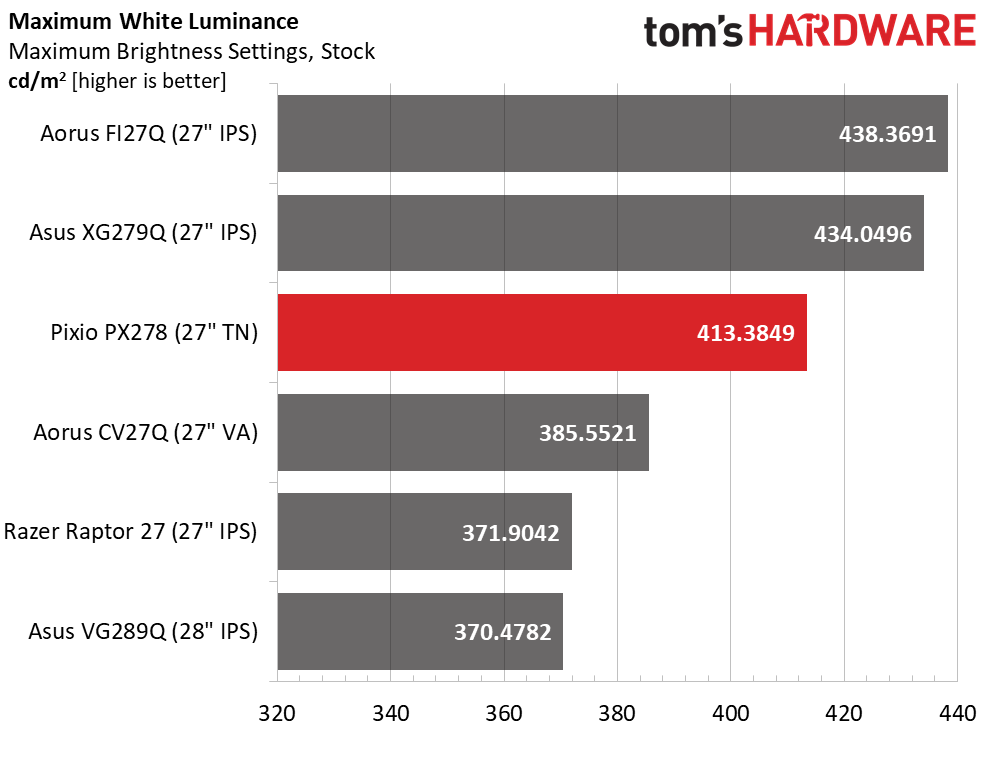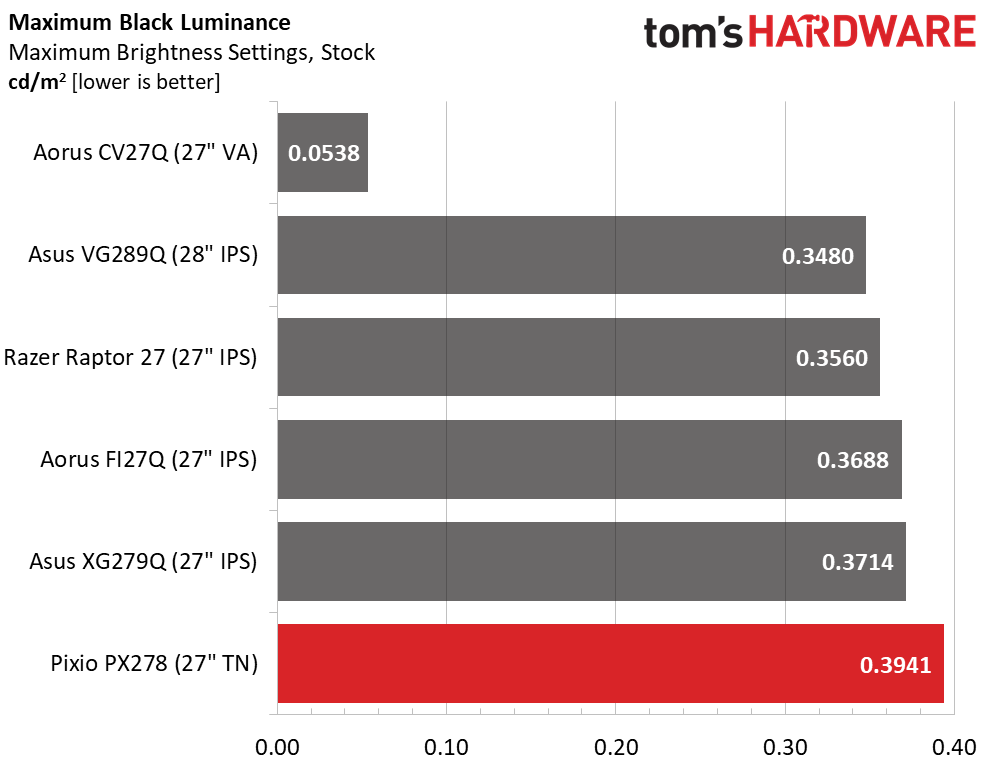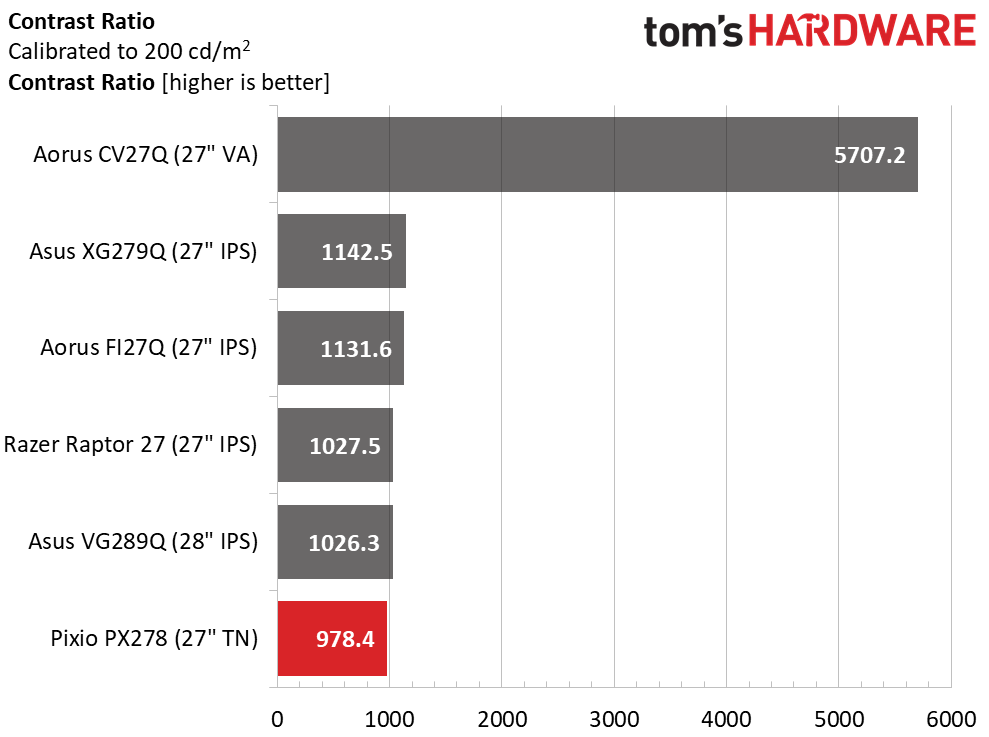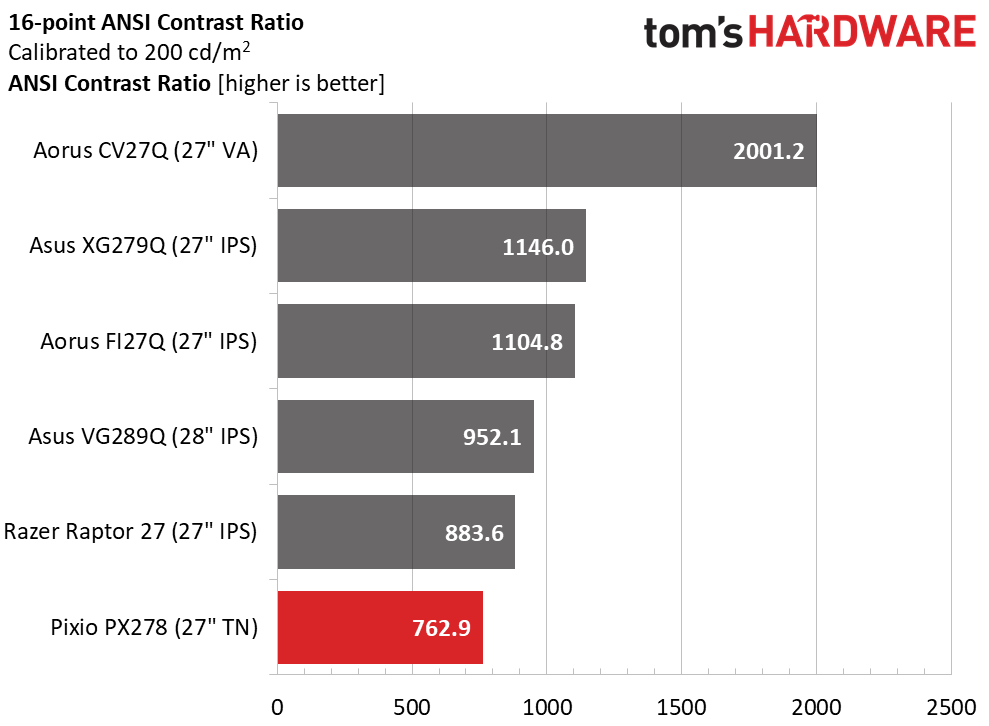Why you can trust Tom's Hardware
To read about our monitor tests in-depth, check out Display Testing Explained: How We Test Monitors and TVs. We cover brightness and Contrast testing is covered on page two.
Uncalibrated – Maximum Backlight Level
We’ve rounded up a group of 27-inch panels for comparison to the PX278. Gigabyte’s represented by the Aorus FI27Q and Aorus CV27Q, the lone VA screen. There’s also the Asus ROG Strix G279Q and Asus TUF Gaming G289Q, as the Razer Raptor 27 IPS monitor. All support HDR and extended color.



The top three monitors, including the PX278, can exceed 400 nits in SDR mode. This is useful in extremely bright environments, but most will want to turn the brightness down to a more comfortable level.
Only the CV27Q and its VA panel can achieve true blacks. The IPS and TN screens look more like a dark gray when the backlight is at maximum. Resulting contrast is 1,049:1 for the Pixio PX278, on par with other IPS and TN monitors. This provided decent image depth, but the best picture still comes from a VA monitor like the CV27Q.
After Calibration to 200 nits



Turning down the backlight to 200 nits made the IPS and TN screens’ black levels much better. While the CV27Q still leads the pack comfortably, the other monitors come much closer to creating a convincing black at this brightness level. Our calibration cost the PX278 a few points in contrast, but it’s still decent at 978.4:1.
Our sample has a few minor uniformity issues, which affected the ANSI contrast score. A slight rise in brightness at the top of the screen drops intra-image contrast a bit. Overall quality is good in the more central zones, which is where the eye is most often focused during gameplay. Bright content looks excellent with vivid color while shadow areas are not as well-defined.
MORE: Best Gaming Monitors
Get Tom's Hardware's best news and in-depth reviews, straight to your inbox.
MORE: How We Test Monitors
MORE: All Monitor Content
Current page: Brightness and Contrast
Prev Page Features and Specifications Next Page Grayscale, Gamma and Color
Christian Eberle is a Contributing Editor for Tom's Hardware US. He's a veteran reviewer of A/V equipment, specializing in monitors. Christian began his obsession with tech when he built his first PC in 1991, a 286 running DOS 3.0 at a blazing 12MHz. In 2006, he undertook training from the Imaging Science Foundation in video calibration and testing and thus started a passion for precise imaging that persists to this day. He is also a professional musician with a degree from the New England Conservatory as a classical bassoonist which he used to good effect as a performer with the West Point Army Band from 1987 to 2013. He enjoys watching movies and listening to high-end audio in his custom-built home theater and can be seen riding trails near his home on a race-ready ICE VTX recumbent trike. Christian enjoys the endless summer in Florida where he lives with his wife and Chihuahua and plays with orchestras around the state.